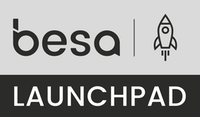Is it time for some staff wellbeing?

With the winter holiday season firmly on it's way, and another exhausting half-term for teacher colleagues who continue to put their pupils before themselves, we are delighted to present a blog on staff wellbeing written by our friend and colleague Joanna Feast.
Having visited hundreds of schools in my career, I've found there are so many similarities that I often end up suggesting the same things in my capacity as a consultant: if you can crack staff well-being, you can usually succeed in most other areas. It sounds a bit reductive but there is nothing new under the sun.
Here are a few of my favourite ideas and suggestions for promoting staff well-being:
1) One of the most popular ways of promoting staff well-being is to provide free cake in the staff room...but I would suggest that, as tasty as that sounds, it's not a long-term solution. What seems to work better in most settings is allowing everyone to be heard. If people are noticed, acknowledged and listened to properly, they feel more valued. This value turns into engaged, loyal, enthusiastic and more capable staff teams - which feels like a win to me.
2) Self-awareness is a great first step to considering staff well-being. Start by asking: how well do you know yourself? Not just what flavour of ice-cream you fancy or what your favourite box-set is…
According to Daniel Goleman, true self-awareness means the ability to monitor our inner world – our thoughts and feelings. You know what you are feeling and why – and how it helps or hurts what you are trying to do. You sense how others see you and your self-image reflects that larger reality. You have an accurate sense of your strengths and limitations, which gives you a realistic self-confidence. It also gives you clarity on your values and sense of purpose, so you can be more decisive when you set a course of action – and that is vital when thinking about your well-being.
3) When I work with teachers in schools, I have a bit of a spiel, which usually goes something like this:
Before you can think about helping yourself or others at times of hurt or upset, it is vital to build up your sense of your ‘self’. How aware are you of your thoughts, feelings, reactions and responses? Do you know your habits? Be reassured that self-awareness isn’t something that you achieve once. Every moment is an opportunity to be self-aware or not. It is a continual undertaking, a conscious choice to be self-aware. The good news is that the more you practise it, the easier it becomes.
4) The most important thing to consider when thinking about staff well-being is: will this make a fundamentally positive difference to the adults in the school without causing excess work? If not, I heavily encourage you to scrap it. I’ve been in so many schools where staff push for all kinds of well-being ideas, most of which have limited positive effects (and a whole heap of extra effort). For example, I’m not a big fan of introducing measures like the Chocolate Fairy or Jacket Potato Wednesday before the real reason for staff stress is examined and resolved. Some difficult choices need to be made and I might not be the most popular person in the school for calling it out, but my experience tells me that just treating the top layer of symptoms does not work long-term. You need to delve deeper and tackle the root causes. And that takes time, effort and careful planning – and communication, always.
5) Teachers I’ve come across tend to be ‘very busy people’. Being busy can take hold of your life, your thoughts and actions. I’ve been in the grip of ‘busy-ness’ so many times, I’ve lost track. And the conclusion I have come to? We have to choose to be less busy. We have to get off the busy-treadmill, the busy-hamster wheel, and decide it’s not for us. The world still turns regardless of how I operate. Brené Brown sums it up beautifully:
“’Crazy-busy’ is a great armor, it’s a great way for numbing. What a lot of us do is that we stay so busy and so out in front of our life, that the truth of how we’re feeling and what we really need can’t catch up with us.”
It might not be easy, but try to stay alongside life, rather than out in front, so you can catch up with yourself. And this means we have to plan well and let some ‘vital’ things pass us by…
6) My final pondering point is one about rewards, particularly those used in schools. One of the best bits about achievement is the associated rewards – and there are two distinct types of reward: extrinsic and intrinsic.
Extrinsic rewards are the physical ones that come from an external source. When it comes to rewards, we are usually most familiar with extrinsic rewards: money, promotion, prizes, and so on. They are dependent on someone else offering them and are in stark contrast to intrinsic rewards, which are the non-physical rewards. They cannot be seen or touched but are emotionally connected with something. In other words, intrinsic rewards can be defined as the feeling of contentment one finds in completion of any task. Intrinsic reward is directly related to performance as a successful task automatically produces it. The higher the success rate, the higher the rate of intrinsic rewards we receive.
How can you do this? Find a way to reward yourself intrinsically rather than waiting for someone else to do it for you. The ‘reward’ for intrinsic reward will feel so much sweeter.
Finally, making sure you reward yourself can sometimes be overlooked in a busy lifestyle. So, ask yourself: how am I going to reward myself for a job I know I have done well?
Joanna Feast is an education consultant specialising in PSHE Education and well-being in schools. She is a writer, trainer and teacher, as well as an exercise therapist and instructor. Find out more at www.cleanwellbeing.com




